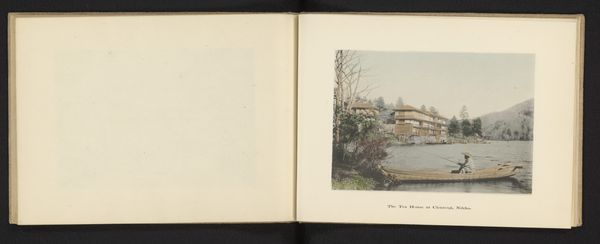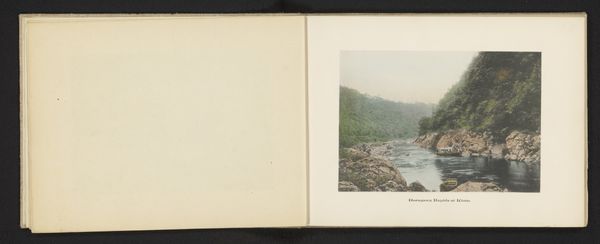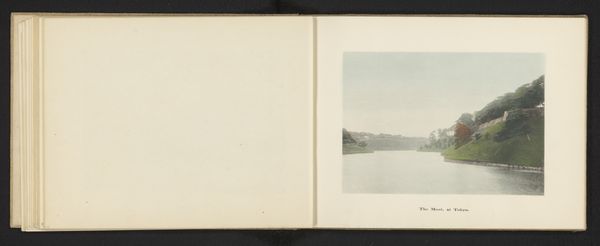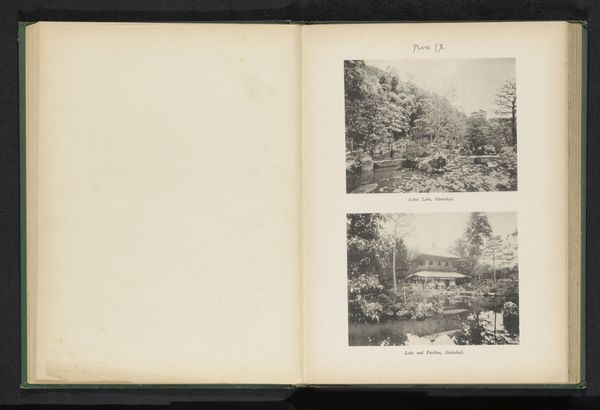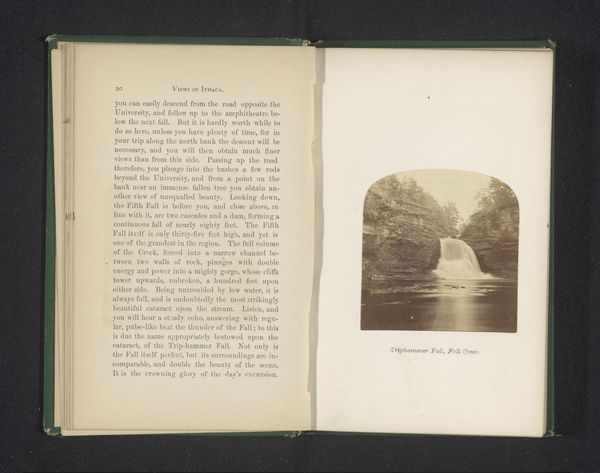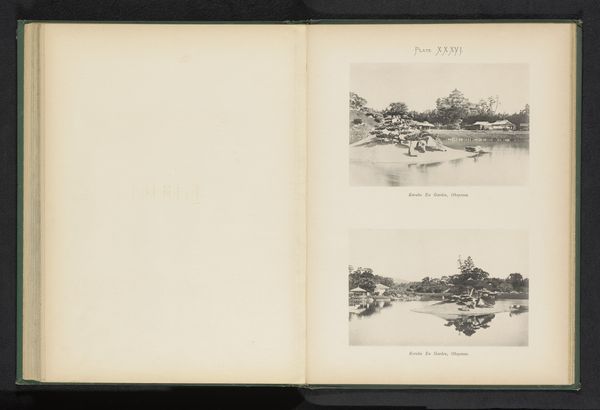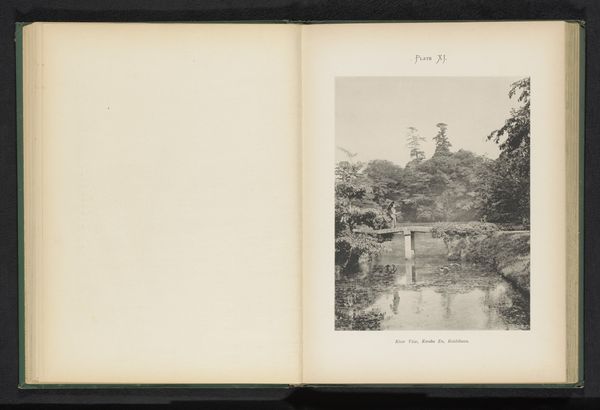
photography
#
landscape
#
photography
Dimensions: height 105 mm, width 150 mm
Copyright: Rijks Museum: Open Domain
Curator: Here we have Kōzaburō Tamamura's "Gezicht op de Shinkyobrug bij de Futarasan jinja in Nikko," a photo print dating from around 1895 to 1905. The image itself is stunningly crisp. Editor: The redness of that bridge pops so wonderfully, like a deliberate stroke laid against the watery grays and misty greens of the surrounding landscape. A man-made color screaming out from the nature. Curator: Indeed. Tamamura's capture employs the hand-colored albumen print technique, popular during that period. What interests me is its engagement with Japonisme. Here’s a Japanese artist catering to a Western taste for exotic landscapes, carefully staged. Editor: It's almost theatrical, isn’t it? This bridge is more like a prop, set for an occidental opera starring geishas. The water bisects the shot, directing the eyes up and away towards the mountain background obscured by the mist... This misty atmospheric perspective is quite a deliberate artistic decision, even with photography being a relatively novel media during this time! Curator: Exactly. Photography offered a perceived authenticity that, when tinted with Orientalist and Japonisme sensibilities, produced highly consumable—and sometimes problematic—cultural commodities. Notice, too, how the composition adheres to familiar landscape conventions. The bridge anchors the scene, providing a clear focal point for the Western gaze. Editor: You can practically smell the eagerness behind the lens, the will to both exoticize the Orient, and make it... relatable. Yet the sheer artistry cannot be denied. That water! It's less water, more like the color white poured generously on land. It's that visual paradox that gives the picture a feeling, you know, makes the scene... I am feeling like being there! Curator: That very tension – between authenticity and constructed exoticism, familiarity and the foreign – gives Tamamura's work its enduring appeal and provokes a dialogue still so active today. It prompts us to confront our assumptions about representation, perception, and the commerce of culture. Editor: So true. A beautiful, slightly sad artifact, shimmering with cultural yearning. A world consumed with another, visualized so keenly for us.
Comments
No comments
Be the first to comment and join the conversation on the ultimate creative platform.
